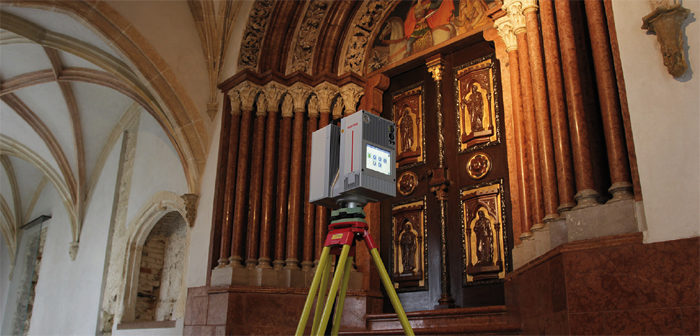The more than thousand-year old Benedictine Archabbey of Pannonhalma, a UNESCO world heritage site, is one of the oldest historical monuments in Hungary and the second largest territorial abbey in the world. The wonderful wood carvings of the red marble Porta Speciosa, the original main entrance to the church during the Middle Ages, is the first masterpiece of the Hungarian classic Gothic style. In January 2014, engineers using the HDS7000 from Leica Geosystems, were able to document the fine details of this great portal, digitally preserving it for future posterity.
The engineers digitally preserved the current condition of Porta Speciosa and created a spectacular 3D model that could be used to reconstruct the portal authentically and to give an informative, interactive 3D presentation as well.
The HDS7000 from Leica Geosystems laser scanner did not touch the artefact in any way, nor was the condition of the portal damaged. The scanning and data collection was followed by significant post-processing, since the bevelled,
richly sculpted arches could not be easily scanned and attention to the fine, ornamental details was needed.
As a result of the digitalisation, original information can be easily retrieved at anytime and anywhere. The authentic 3D models of various architectural time periods have also helped to verify these hypotheses.














